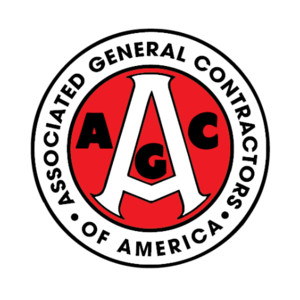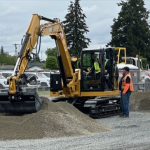Building a strong foundation: Embracing diversity and inclusion in the construction industry
The construction industry, traditionally perceived as male-dominated and lacking diversity, is undergoing a transformative shift towards greater inclusivity. As society recognizes the value of diversity in fostering innovation and creating a vibrant workplace culture, the construction sector is embracing change. In this blog post, we’ll explore the importance of diversity and inclusion in the construction industry, the challenges faced, and the positive impact it can have on both the workforce and the projects themselves.
inclusivity. As society recognizes the value of diversity in fostering innovation and creating a vibrant workplace culture, the construction sector is embracing change. In this blog post, we’ll explore the importance of diversity and inclusion in the construction industry, the challenges faced, and the positive impact it can have on both the workforce and the projects themselves.
The Current Landscape
Historically, the construction industry has been characterized by a lack of diversity, with gender and racial disparities being particularly pronounced. However, recognizing the need for change, many organizations are actively working to create a more inclusive environment. While progress has been made, there is still work to be done to break down barriers and encourage a diverse range of individuals to pursue careers in construction.
Benefits of Diversity in Construction
Innovation and Problem Solving: A diverse workforce brings together individuals with unique perspectives and problem-solving approaches. In construction, where challenges are often multifaceted, having a team with diverse backgrounds can lead to more innovative solutions and improved project outcomes.
Increased Productivity: Inclusive workplaces foster a sense of belonging, which, in turn, enhances employee engagement and productivity. When individuals feel valued and respected for their contributions, they are more likely to be motivated and committed to their work.
Reflecting the Community: Construction projects impact local communities, and a diverse workforce ensures that the industry better reflects the demographics of those communities. This not only enhances community relations but also contributes to a broader understanding of local needs and priorities.
Challenges and Opportunities: Despite the benefits, there are challenges to achieving diversity and inclusion in the construction industry. Deep-rooted stereotypes, lack of awareness, and a historical lack of representation can make it challenging to attract and retain a diverse workforce. However, these challenges present opportunities for positive change.
Educational Outreach: To address the underrepresentation of certain groups, the construction industry can engage in targeted educational outreach programs. These initiatives can include partnerships with schools and community organizations to encourage students from diverse backgrounds to explore careers in construction.
Leadership Commitment: Leadership plays a crucial role in driving diversity and inclusion initiatives. When leaders actively commit to fostering an inclusive culture and take steps to address biases within the organization, it sets a precedent for the entire workforce.
Diverse Hiring Practices: Adopting inclusive hiring practices, such as blind recruitment and diverse interview panels, can help mitigate unconscious biases and ensure that qualified candidates from all backgrounds have equal opportunities.
As the construction industry evolves, embracing diversity and inclusion is not just a moral imperative but a strategic advantage. A diverse workforce brings a range of perspectives and skills that contribute to a dynamic and resilient industry. By actively addressing the challenges and seizing the opportunities, the construction sector can build a strong foundation for a more inclusive future—one that benefits both its employees and the communities it serves. As more companies recognize the importance of diversity, the construction industry can look forward to a brighter, more innovative, and collaborative future.








